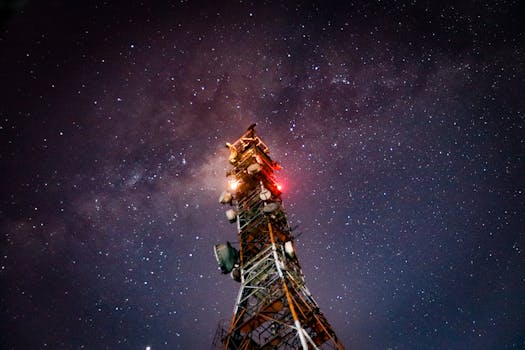
Starlink: The Revolutionary Satellite Constellation Changing Global Connectivity
Starlink is a satellite constellation developed by SpaceX, aiming to provide high-speed, low-latency internet connectivity worldwide, bridging the digital divide and transforming the way we communicate. With its cutting-edge technology and ambitious goals, Starlink is poised to revolutionize the telecommunications industry and bring about a new era of global connectivity.
Section 1: Introduction to Starlink
Starlink was first announced in 2015 by SpaceX, with the goal of creating a constellation of low-Earth orbit (LEO) satellites that would provide internet connectivity to remote and underserved areas around the world. The project has since gained significant traction, with SpaceX launching numerous satellites into orbit and conducting extensive testing to ensure the viability of the network. The Starlink constellation is designed to comprise thousands of satellites, each equipped with advanced communication technology and solar panels to generate power.
One of the key features of Starlink is its use of LEO satellites, which orbit the Earth at an altitude of approximately 550 kilometers. This allows for significantly reduced latency compared to traditional geostationary satellites, which can be up to 36,000 kilometers away from the Earth’s surface. As a result, Starlink is capable of providing internet speeds of up to 1 Gbps, making it an attractive option for applications that require high-bandwidth and low-latency connectivity, such as online gaming and video streaming.
Section 2: Technical Overview of Starlink
The Starlink system consists of several components, including the satellite constellation, ground stations, and user terminals. The satellites are equipped with Hall effect thrusters, which provide propulsion and allow the satellites to maintain their position in orbit. Each satellite is also equipped with a pair of solar panels, which generate power and enable the satellite to operate for extended periods. The satellites communicate with ground stations using advanced radio frequency (RF) technology, which allows for high-speed data transfer and efficient use of bandwidth.
The user terminals, also known as Starlink dishes, are designed to be compact and easy to install. They consist of a phased array antenna, which allows for electronic beam steering and enables the user to connect to the Starlink network without the need for manual alignment. The user terminals also include a modem and power supply, making it easy for users to connect to the internet and start using the Starlink service.
Section 3: Impact of Starlink on Global Connectivity
Starlink has the potential to revolutionize global connectivity, providing internet access to remote and underserved areas around the world. According to the International Telecommunication Union (ITU), approximately 3.8 billion people worldwide lack access to the internet, with many of these individuals living in areas where traditional telecommunications infrastructure is limited or non-existent. Starlink aims to bridge this digital divide, providing high-speed internet connectivity to these areas and enabling individuals to access a wealth of information, educational resources, and economic opportunities.
The impact of Starlink will be felt across various industries, from education and healthcare to finance and commerce. For example, students in remote areas will be able to access online educational resources, while healthcare professionals will be able to consult with specialists and access medical information in real-time. Businesses will also benefit from Starlink, with the ability to connect with customers and suppliers worldwide, and access new markets and opportunities.
Section 4: Challenges and Future Developments
While Starlink has made significant progress, there are still several challenges that need to be addressed. One of the main concerns is the potential for interference with other satellite systems, as well as the risk of collisions with space debris. SpaceX is working to mitigate these risks, by implementing advanced collision avoidance systems and working with regulatory bodies to ensure compliance with international standards.
In conclusion, Starlink is a revolutionary satellite constellation that has the potential to transform global connectivity. With its advanced technology, ambitious goals, and commitment to bridging the digital divide, Starlink is poised to make a significant impact on the telecommunications industry and beyond. As the project continues to evolve, it will be exciting to see the innovative applications and use cases that emerge, and the positive impact that Starlink will have on communities around the world.




